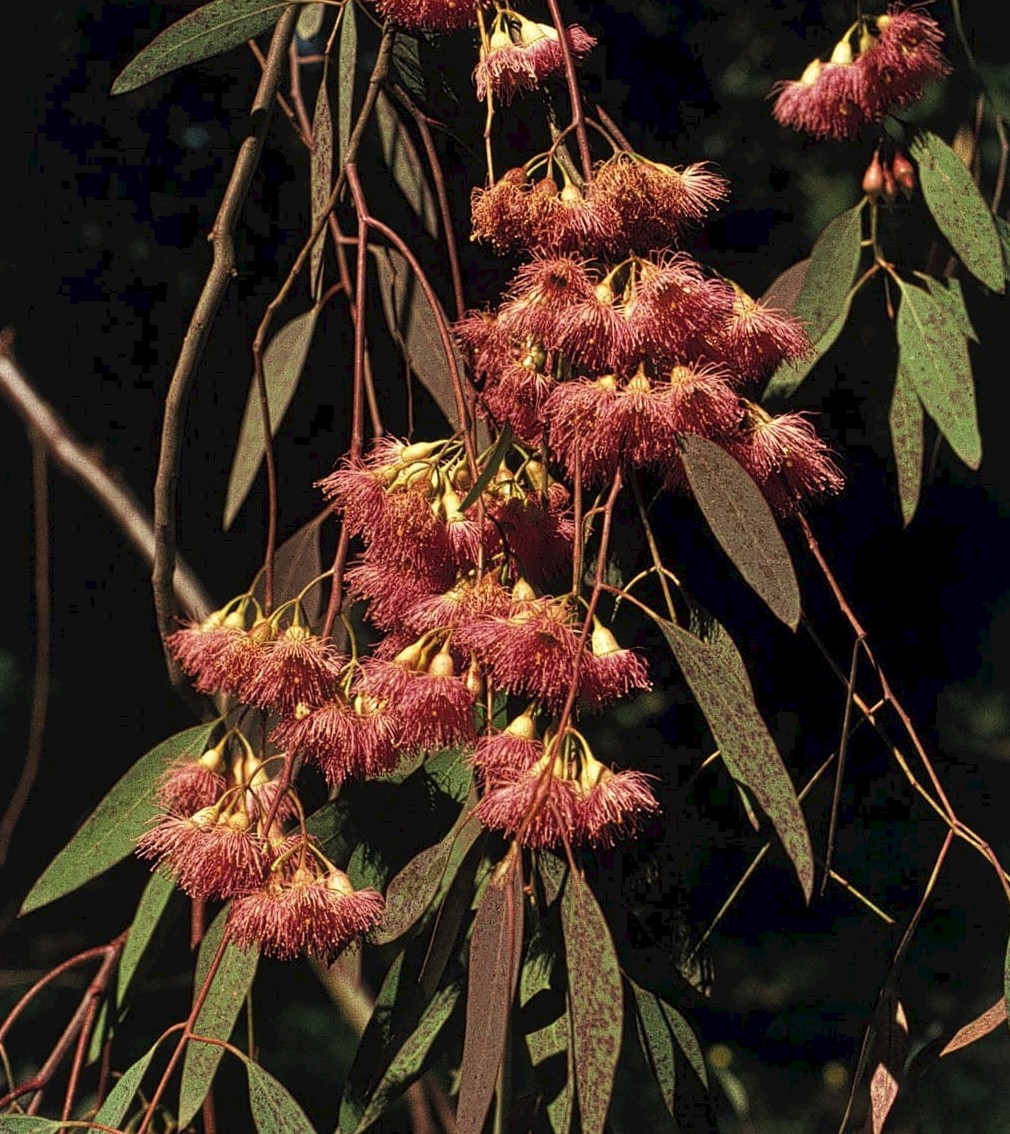Eucalyptus sideroxylon
Credits
Article from New Trees by John Grimshaw & Ross Bayton
Recommended citation
'Eucalyptus sideroxylon' from the website Trees and Shrubs Online (treesandshrubsonline.
Other taxa in genus
- Eucalyptus acaciiformis
- Eucalyptus albida
- Eucalyptus amygdalina
- Eucalyptus archeri
- Eucalyptus blakelyi
- Eucalyptus bridgesiana
- Eucalyptus brookeriana
- Eucalyptus camaldulensis
- Eucalyptus camphora
- Eucalyptus chapmaniana
- Eucalyptus cinerea
- Eucalyptus coccifera
- Eucalyptus cordata
- Eucalyptus crenulata
- Eucalyptus cypellocarpa
- Eucalyptus dalrympleana
- Eucalyptus delegatensis
- Eucalyptus elliptica
- Eucalyptus fastigata
- Eucalyptus fraxinoides
- Eucalyptus globulus
- Eucalyptus gregsoniana
- Eucalyptus gunnii
- Eucalyptus johnstonii
- Eucalyptus kybeanensis
- Eucalyptus lacrimans
- Eucalyptus laophila
- Eucalyptus leucoxylon
- Eucalyptus macarthurii
- Eucalyptus macrorhyncha
- Eucalyptus mannifera
- Eucalyptus melliodora
- Eucalyptus mitchelliana
- Eucalyptus moorei
- Eucalyptus morrisbyi
- Eucalyptus neglecta
- Eucalyptus nicholii
- Eucalyptus nitens
- Eucalyptus nova-anglica
- Eucalyptus obliqua
- Eucalyptus oreades
- Eucalyptus ovata
- Eucalyptus parvula
- Eucalyptus pauciflora
- Eucalyptus praecox
- Eucalyptus radiata
- Eucalyptus regnans
- Eucalyptus remota
- Eucalyptus risdonii
- Eucalyptus rodwayi
- Eucalyptus rubida
- Eucalyptus saligna
- Eucalyptus stellulata
- Eucalyptus subcrenulata
- Eucalyptus tenuiramis
- Eucalyptus urnigera
- Eucalyptus viminalis
Tree to 35 m. Bark reddish brown to black, hard, deeply furrowed throughout, or smooth and white on upper branches. Branchlets green. Juvenile leaves alternate, green or greyish green, linear to lanceolate or ovate, petiolate. Adult leaves alternate, green, greyish green or blue-green, 7–14 × 1.2–1.8 cm, lanceolate, lateral veins indistinct, margins entire, apex acuminate or uncinate; petiole terete, 1–2 cm long. Inflorescences axillary and solitary; umbellasters with three or seven flowers. Flower buds ovoid, beaked; hypanthium ovoid to hemispherical; stamens white, cream, yellow, pink or red. Capsule globose or hemispherical or ovoid, 0.5–0.9 cm diameter; valves five to six, included. Chippendale 1988, Hill 2004. Distribution AUSTRALIA: New South Wales, Queensland, Victoria. Habitat Sclerophyllous woodland on poor soils. USDA Hardiness Zone 10. Conservation status Not evaluated. Illustration NT360. Taxonomic note In subsp. sideroxylon the umbellasters are seven-flowered, while in subsp. tricarpa L.A.S. Johnson they are three-flowered.
Eucalyptus sideroxylon is another species that is only marginally hardy in our area, but is a popular street and landscaping tree in Australia and southern California, valued for its upright growth, reddish bark and handsome appearance. The flowers are normally white but can be yellow, pink or red, and it is this variation that makes it interesting to enthusiasts seeking the elusive hardy red-flowered gum tree. Alas, it is not quite hardy enough, with potted plants grown under the protection of a polytunnel in Kent suffering slight damage in winter (G. Blunt, pers. comm. 2007). For John Purse (pers comm. 2007), specimens from high-altitude provenance are surviving in north Kent, though growing very slowly, and subsp. tricarpa flowered for him in Cornwall, in 2007. If tried outdoors this tree should be afforded a very favourable site, and in coastal or inner-city locations it may prove satisfactory.

